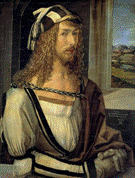Art, Art History and Design, School of

School of Art, Art History, and Design: Faculty Publications and Creative Activity
Document Type
Article
Date of this Version
9-2009
Abstract
Photographs by Dana Fritz
Terraria Gigantica examines the world’s largest indoor landscape complexes: Biosphere 2 near Tucson, Arizona; the Desert Dome and Lied Jungle at the Henry Doorly Zoo in Omaha, Nebraska; and the Eden Project near St. Austell, Cornwall, UK. The project’s title refers to these enclosed structures that permit near-total control of temperature, humidity, insects, weeds and irrigation to allow the cultivation of species and creation of a landscape that would otherwise be impossible in that particular climate. Each an architectural and engineering marvel when built, they continue to stand as working symbols of our current relationship with the natural world. These giant high-tech terrariums draw from a rich lineage of public conservatories cultivating the exotic but also serve as large-scale laboratories for research on plants, animals, complex ecosystems and the effects of climate change. While these spaces are often crowded with visitors, my experience is more solitary as my attention veers away from the carefully constructed exhibits and educational materials and into the corners and edges of the biomes where façades crumble or illusion fades. In these liminal spaces, the natural and artificial elements often collide, overlap, bleed together or become indistinguishable. Small details lead to big questions about what it means to create and contain landscapes and whether they supplement or replace experiences on the outside. The continued interest in facilities that enclose and display plants and animals in simulated natural environments seems to indicate a palpable concern for the future of nature as we know (or knew) it. Under the glass, I frame images and ideas, ponder the distinctions between natural and artificial, and examine the evolving "nature" of nature.


Comments
Copyright (c) 2009 Dana Fritz, School of Art, Art History, and Design, 120 Richards Hall, University of Nebraska-Lincoln, Lincoln, NE 68588-0114. danafritz.com
This book is now available from University of New Mexico Press; $45.00 hardcover; ISBN 978-0-8263-5873-8 http://unmpress.com/books.php?ID=20000000007036&Page=book